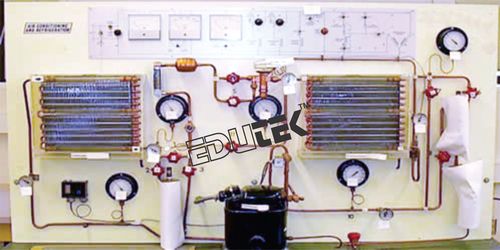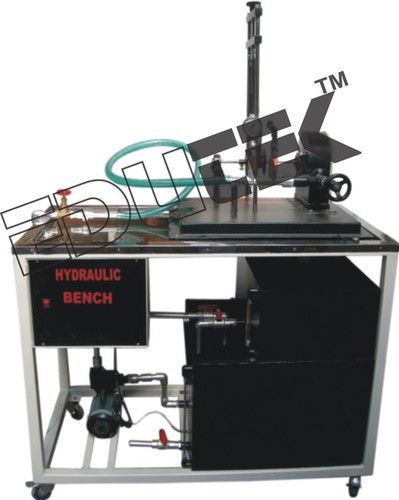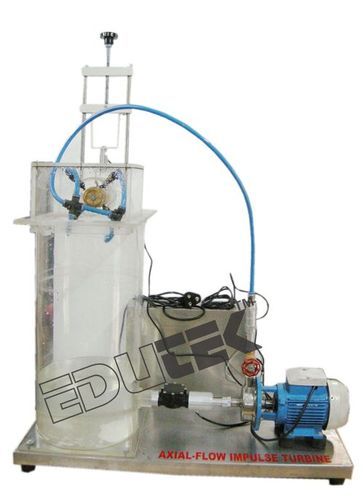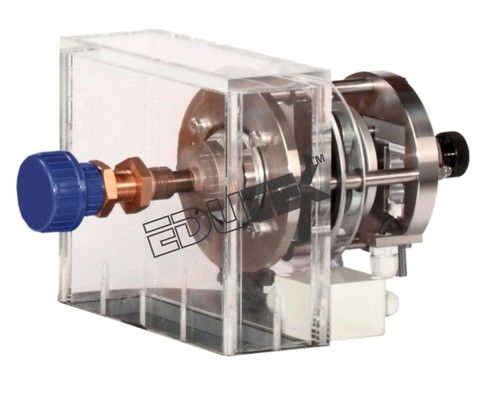Compression Refrigeration System
Product Details:
X
Product Description
COMPRESSION REFRIGERATION SYSTEM
The setup of represents a typical refrigeration circuit consisting of a hermetic compressor, condenser, evaporator and expansion element. Evaporator and condenser are designed as finned tube heat exchangers. The pipes of both heat exchangers are partially transparent to visualise the process of the phase transition during evaporation and condensing. Three capillary tubes of different lengths and a thermostatic expansion valve can be compared as expansion elements.
The trainer is equipped with a receiver for refrigerant. Using the receiver, refrigerant can be added to or removed from the refrigeration circuit. This allows for the effects of overfilling or underfilling of the system to be examined.
The flow rate of the refrigerant is read from a flow meter. Temperature and pressure in the refrigeration circuit and the electrical power consumption of the compressor are recorded by sensors. The measured values can be read on digital displays. At the same time, the measured values can also be transmitted directly to a PC via USB. The data acquisition software is included. Parameter changes in the refrigeration circuit can be viewed dynamically in the softwares log p-h diagram.
The well-structured instructional material sets out the fundamentals and provides a step-by-step guide through the experiments. The unit shall perform the following experiments and investigations:
Learning Objectives / Experiments
- Function and operational behaviour of the
- Refrigeration circuit components
- Operation with expansion valve or with capillary
- Tubes of different lengths
- Underfilling or overfilling with refrigerant
- Thermodynamic cycle in the log p-h diagram
- From the log p-h diagram and in comparison
- With the measured values
- Determination of the refrigeration capacity
- Determination of the coefficient of performance
- Determination of the efficiency of the compressor
Specification
- Investigation of a refrigeration system with different expansion elements
- Refrigeration circuit consisting of a hermetic compressor, condenser, evaporator and expansion element
- Transparent finned tube heat exchangers as condenser and evaporator to observe the phase transitions of the refrigerant
- Expansion valve and capillary tubes of different lengths as expansion elements
- Receiver for underfilling/overfilling the system with refrigerant
- Sensors record pressure and temperature
- Compressor equipped with two pressure switches
- Software for data acquisition via USB under Windows Vista or Windows 7
- Refrigerant R134a, CFC-free
Technical Data
- Compressor
- Power consumption: 213W at 7,2/32C
- Refrigeration capacity: 372W at 7,2/32C
- Condenser and evaporator with fan
- Max. volumetric air flow rate condenser: 300m/h
- Max. volumetric air flow rate evaporator: 180m/h
- Capillary tubes: 1,5m, 3m, 6m
- Receiver for refrigerant: 1,3L
Measuring ranges
- Pressure: -1...9bar / -1...24bar
- Temperature: 4x -40...150C, 1x -100...100C
- Flow rate: 2...18m/h
- Electric power consumption: 0...1000W
Dimensions and Weight
- LxWxH: 1740x800x1780mm
- Weight: approx. 190kg
Tell us about your requirement

Price:
Quantity
Select Unit
- 50
- 100
- 200
- 250
- 500
- 1000+
Additional detail
+91
Email
Other Products in 'Fluid Mechanics Lab Equipment' category
"We deal all over World but our main domestic market is South India"
 |
EDUTEK INSTRUMENTATION
All Rights Reserved.(Terms of Use) Developed and Managed by Infocom Network Private Limited. |














